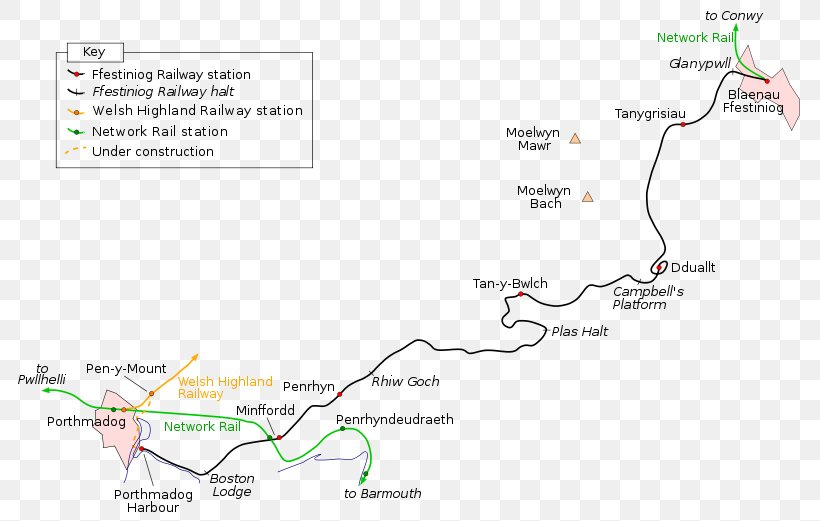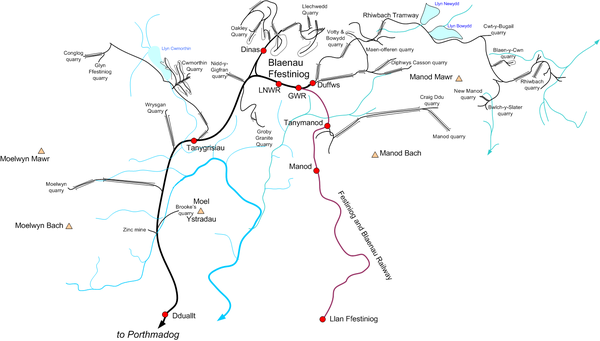Network Rail says Storm Ciara, which bought 90mph winds, extreme rainfall, and flooding across Wales, has caused extensive damage on the Conwy Valley Line, north of Llanrwst. First post!eagle browser.
The Conwy Valley Line in North Wales, which runs from Blaenau Ffestiniog to Llandudno, is due to reopen on 28 September following a £2.2 million project by Network Rail that will help protect the railway from extreme weather and flooding.



Engineers have identified several sites where the ballast supporting the track has been washed away by floodwater. The storm has also damaged fencing and level crossings at several locations.
- Conwy Valley Railway line map. Conwy Valley Railway Partnership. Home; About; Blog; Map; Gallery; Walks; Stations. Llandudno; Deganwy.
- The Conwy Valley Line, which runs from Blaenau Ffestiniog to Llandudno in north Wales, will reopen on next week after Network Rail has completed £2.2M of work to better protect the railway from extreme weather and flooding.
- The Conwy is bounded to the east by the rolling ancient mudstone hills of the Silurian period, the Migneint Moors. These acid rocks are generally covered in thin, often acid soils and for large parts of the upland areas the cover is of moor-grass — Mollinia spp and Erica communities.
Conwy Valley Line Closure
Further assessments will be carried out once the floodwater has receded, but early indications suggest that the damage is not as extensive as that caused by Storm Gareth in March last year, when the line was closed for four months.
While the line remains closed, Transport for Wales will operate a rail replacement bus service to keep passengers moving but passengers are urged to check before they travel.
Firstly, we would like to apologise to passengers and the local community affected by this closure. The Conwy Valley Line is a social and economic lifeline and this latest setback is particularly frustrating given this line has been hit so hard by extreme weather over recent years.

Conwy Valley Line Flooding
From the beautiful bay at Llandudno, “Queen of the Welsh resorts”, the Conwy Valley Line takes you on a 30-mile journey through the contrasting landscapes of the Conwy and Lledr valleys. The scenery changes from gentle rolling pastures to rugged mountains and the splendour of the Snowdonia National Park. The Conwy Valley Line climbs to 250m above sea level, passing through the mountains to arrive at the slate-mining town of Blaenau Ffestiniog.
Castle Walls
& wading birds
Your journey starts in the classic Victorian seaside town of Llandudno, largest resort in Wales, with sandy beaches, a fine pier (the country’s longest) and a great range of hotels and shops. As you head towards Deganwy on the North Wales coast, there are glimpses of Anglesey and Puffin Island and, as you slow into Llandudno Junction, the magnificent Conwy Castle. Conwy’s town walls with their 21 towers surround the imposing 13th-century castle, standing on a rock above the estuary against a mountainous skyline.The train leaves Llandudno Junction and now follows the broad sweep of the Conwy estuary, alive with wading birds foraging in low tide mud, to Glan Conwy, home of a nature reserve. Here visitors can see colourful shelducks in the lagoons or summertime sedge warblers whirring out of the bushes.
Gardens
& gourmet food
Tal-y-Cafn station brings you to Bodnant Gardens, 80 terraced acres of fragrant, exotic plants, shady trees and sloping lawns above the River Conwy, with views across the Hiraethlyn valley towards the Snowdonian peaks, www.nationaltrust.org.uk/bodnant-garden. Close by is the Bodnant Welsh Food Centre with a choice of eateries, serving gourmet local produce, from award-winning cheeses made in the onsite dairy to local crabs and scallops, www.bodnant-welshfood.co.uk.Nearing Dolgarrog you catch sight of Surf Snowdonia, a specially made lagoon with artificial waves in the river below, which offers a range of water-related sporting activities, www.surfsnowdonia.co.uk. The valley narrows as the line nears Llanrwst, an ancient market town with a graceful stone bridge built by Inigo Jones in the 17th-century, as well as Gwydr Castle, a beautiful Tudor house that offers luxury B&B, www.gwydircastle.co.uk. The Llanrwst town trail passes St Grwst’s church and adjoining chapel, with the stone coffin of Llewelyn the Great, a lovely riverside walkway and some appealing cafés.
Woods
& waterfalls
Deep in the Gwydyr forest, get off at Betws-y-Coed, once famous as an artists’ retreat, for adventure, scenic walks, tearooms and the Snowdon Sherpa bus, which runs around the Snowdonia National Park. Conwy Valley’s little railway museum is housed in the old goods yard along with a small café. The Swallow Falls are a short woodland walk away, and elsewhere, down steep steps, is the Fairy Glen, a series of rapids and cascades on the Conwy river. The water is funnelled into a narrow gorge, creating a dramatic scene between wooded banks and rocky cliffs, whose moss and ferns are reflected in the river. (www.betwsycoed.org)The railway line climbs steeply as it enters the Lledr Valley, over Gethin’s Bridge, an imposing stone viaduct, carrying the line across the valley floor and up the steepest gradient (1 in 47) to arrive at Pont-y-Pant. Next stop is the picturesque village of Dolwyddelan; Llywelyn the Great, who ruled Wales for 40 years, built the imposing 13th-century castle that guards the pass. The wooded hill opposite the castle was the site of an earlier fortress, where Llywelyn was born, www.cadw.gov.wales/daysout/dolwyddelan-castle.
The Town
that roofed the world
At Roman Bridge, the mountains close in and the train plunges into the darkness of a two-mile tunnel under Moel Dyrnogydd, emerging into a world of slate at Blaenau Ffestiniog. The iconic slate heaps towering above the town are a reminder of Snowdonia’s intimate connection with slate quarrying. Local buildings have been roofed with Ffestiniog slate since Roman times, but, during the industrial revolution, the little village became one of several busy towns, where more than 17,000 quarrymen produced over 485,000 tons of slate.You can find out more about the industrial history of the “town that roofed the world” at the world’s deepest slate mine in Llechwedd Slate Caverns, a mile from the station. Visitors descend Britain’s steepest cable railway to step back in time with an underground Victorian tour. For adventure thrill-seekers, there are also zip wires, trampolines, rope bridges, tunnels and a world-class mountain-biking track, www.llechwedd-slate-caverns.co.uk. The Ffestiniog Railway, which steams south to the harbour town of Porthmadog, starts from the same station at Blaenau Ffestiniog as the Conwy Valley Line.
